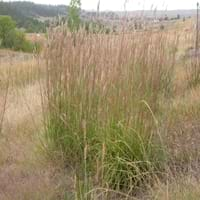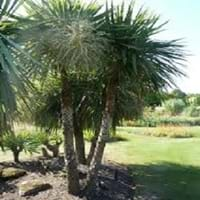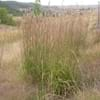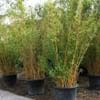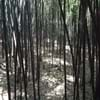Life Span
Perennial
Perennial
Type
Grass
Broadleaf Evergreen
Origin
North America, United States, Northeastern United States, Mid-Atlantic United States, Southeastern United States, North-Central United States, Central United States, South-Central United States, Southwestern United States, Texas, Canada, Mexico
New Zealand
Types
Not Available
Not Available
Habitat
meadows, Prairies, Riverbanks, Roadsides, Woods
Coastal Regions
USDA Hardiness Zone
2-7
8-11
AHS Heat Zone
7 - 1
Not Available
Sunset Zone
1a, 1b, 2a, 2b, 3a, 3b, 4, 5, 6, 7, 8, 9, 14, 15, 16, 17, 18, 19, 20, 21, 22, 23, 24
21,22
Habit
Clump-Forming
Upright/Erect
Flower Color
Purple
White
Flower Color Modifier
Bicolor
Bicolor
Fruit Color
Not Available
White, Blue
Leaf Color in Spring
Green
Burgundy, Dark Red, Copper
Leaf Color in Summer
Light Green
Burgundy, Dark Red, Copper
Leaf Color in Fall
Blue Green, Burgundy, Bronze
Burgundy, Dark Red, Copper
Leaf Color in Winter
Tan, Sandy Brown
Burgundy, Dark Red, Copper
Leaf Shape
Grass like
Long Narrow
Plant Season
Summer, Fall, Winter
Spring, Summer, Fall, Winter
Sunlight
Full Sun, Partial Sun
Full Sun, Partial Sun, Partial shade
Type of Soil
Loam, Sand
Loam, Sand
The pH of Soil
Neutral, Alkaline
Neutral, Alkaline
Soil Drainage
Well drained
Well drained
Bloom Time
Late Summer, Early Fall, Fall
Late Spring, Early Summer, Summer
Tolerances
Not Available
Drought, Salt
Where to Plant?
Container, Ground, Pot
Ground
How to Plant?
Seedlings
Stem Planting, Transplanting
Plant Maintenance
Medium
Medium
Watering Requirements
Average Water Needs, Do Not over Water, Medium
Average Water Needs
In Summer
Lots of watering
Lots of watering
In Spring
Moderate
Moderate
In Winter
Average Water
Average Water
Soil pH
Neutral, Alkaline
Neutral, Alkaline
Soil Type
Loam, Sand
Loam, Sand
Soil Drainage Capacity
Well drained
Well drained
Sun Exposure
Full Sun, Partial Sun
Full Sun, Partial Sun, Partial shade
Pruning
Remove damaged leaves, Remove dead branches, Remove dead leaves, Remove dead or diseased plant parts
Prune if you want to improve plant shape, Remove damaged leaves, Remove dead leaves
Fertilizers
All-Purpose Liquid Fertilizer
All-Purpose Liquid Fertilizer
Pests and Diseases
Red blotch
Red blotch
Plant Tolerance
Not Available
Drought
Flowers
Yes
Insignificant
Flower Petal Number
Single
Single
Foliage Texture
Medium
Coarse
Foliage Sheen
Matte
Not Available
Attracts
Birds, Butterflies
Caterpillar, Moths
Allergy
Not Available
Asthma
Aesthetic Uses
Ground Cover, Landscape Designing, Showy Purposes
Beautification, Landscape Designing, Showy Purposes
Beauty Benefits
Not Available
Not Available
Edible Uses
Insignificant
Yes
Environmental Uses
Air purification, Food for animals, Prevent Soil Erosion
Air purification
Medicinal Uses
Not Available
Diabetes, Dysentry, Stomach pain
Part of Plant Used
Leaves, Stem
Leaves, Root, Stem
Other Uses
Decoration Purposes, Food for animals
Decoration Purposes, Employed in herbal medicine, Showy Purposes, Used As Food, Used as Ornamental plant
Used As Indoor Plant
Insignificant
No
Used As Outdoor Plant
Yes
Yes
Garden Design
Cutflower, Dried Flower/Everlasting, Mixed Border, Screening / Wind Break, Wildflower
Container, Feature Plant, Foundation, Houseplant, Screening, Wind Break, Tropical
Botanical Name
ANDROPOGON gerardii
CORDYLINE australis 'Red Star'
Common Name
Big Bluestem, Turkey Foot
Cabbage Palm
In Hindi
Big Bluestem grass
गोभी पेड़
In German
Große Bartgras
Cabbage tree
In French
Barbon de Gérard herbe
arbre de chou
In Spanish
hierba andropogon grande
árbol de la col
In Greek
Big BLUESTEM γρασίδι
λάχανο δέντρο
In Portuguese
Vetiver grande grama
repolho árvore
In Polish
Big Bluestem trawa
kapusta drzewo
In Latin
Big bluestem herba
brassica ligno
Phylum
Magnoliophyta
Magnoliophyta
Class
Lillosida
Liliopsida
Order
Poaceae
Asparagales
Family
Poaceae
Asparagaceae
Genus
Andropogon
Acidosasa
Clade
Angiosperms, Commelinids, Monocots
Angiosperms, Monocots
Tribe
Not Available
Not Available
Subfamily
Not Available
Lomandroideae
Number of Species
Not Available
Importance of Big Bluestem and Cabbage Tree
Want to have the most appropriate plant for your garden? You might want to know the importance of Big Bluestem and Cabbage Tree. Basically, these two plants vary in many aspects. Compare Big Bluestem and Cabbage Tree as they differ in many characteristics such as their life, care, benefits, facts, etc. Every gardener must at least have the slightest clue about the plants he wants to plant in his garden. Compare their benefits, which differ in many ways like facts and uses. The medicinal use of Big Bluestem is Not Available whereas of Cabbage Tree is Diabetes, Dysentry and Stomach pain. Big Bluestem has beauty benefits as follows: Not Available while Cabbage Tree has beauty benefits as follows: Not Available.
Compare Facts of Big Bluestem vs Cabbage Tree
How to choose the best garden plant for your garden depending upon its facts? Here garden plant comparison will help you to solve this query. Compare the facts of Big Bluestem vs Cabbage Tree and know which one to choose. As garden plants have benefits and other uses, allergy is also a major drawback of plants for some people. Allergic reactions of Big Bluestem are Not Available whereas of Cabbage Tree have Asthma respectively. Having a fruit bearing plant in your garden can be a plus point of your garden. Big Bluestem has no showy fruits and Cabbage Tree has showy fruits. Also Big Bluestem is flowering and Cabbage Tree is not flowering . You can compare Big Bluestem and Cabbage Tree facts and facts of other plants too.
